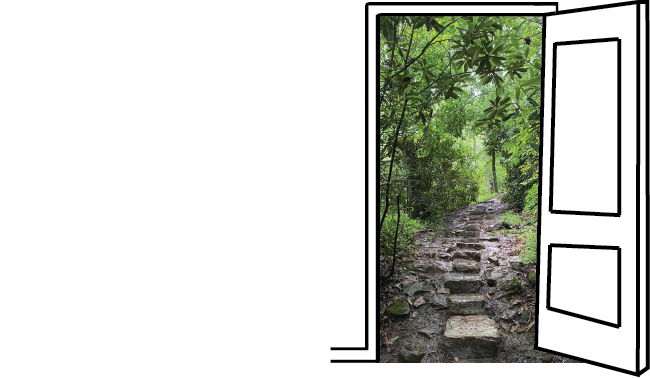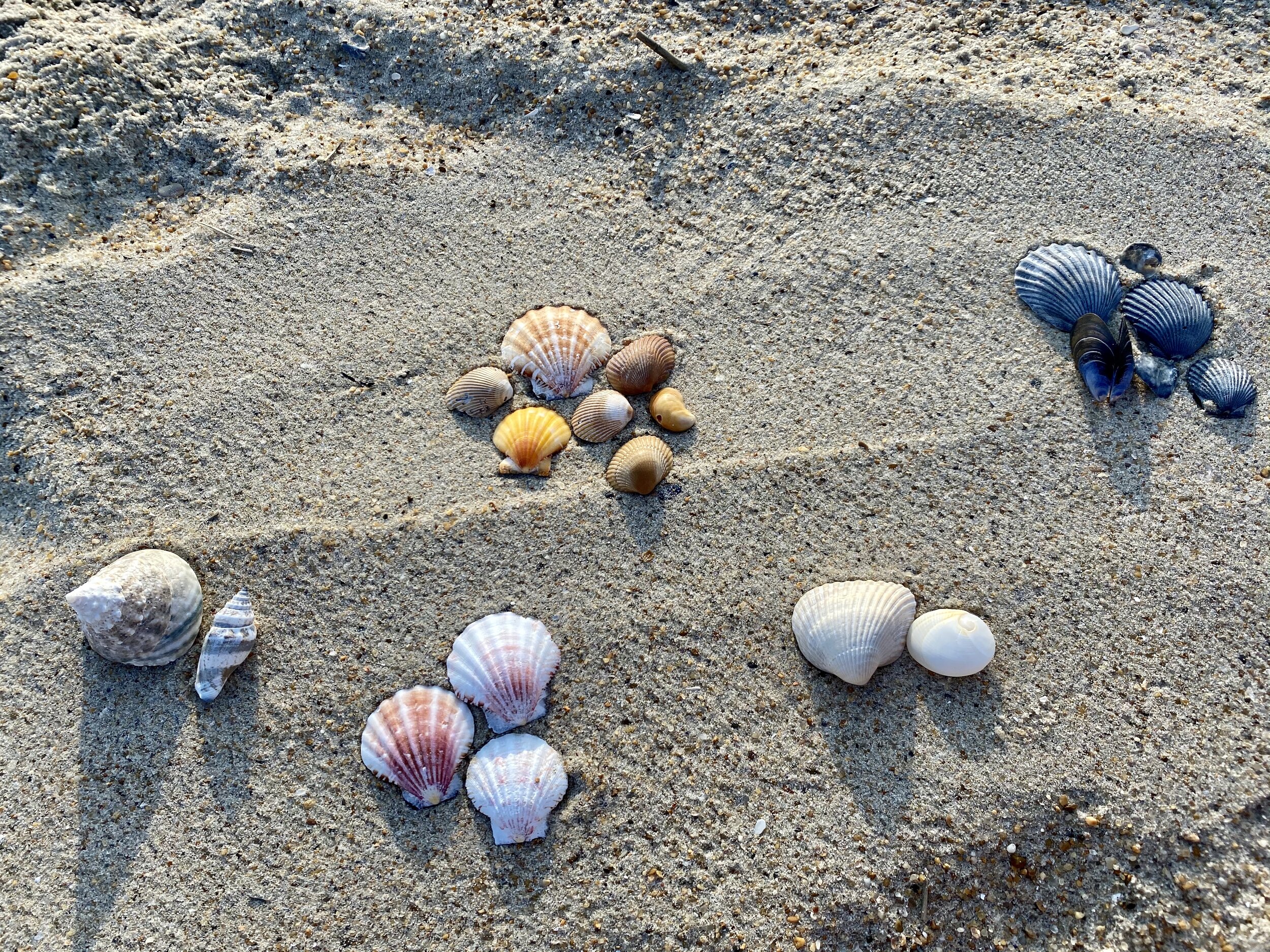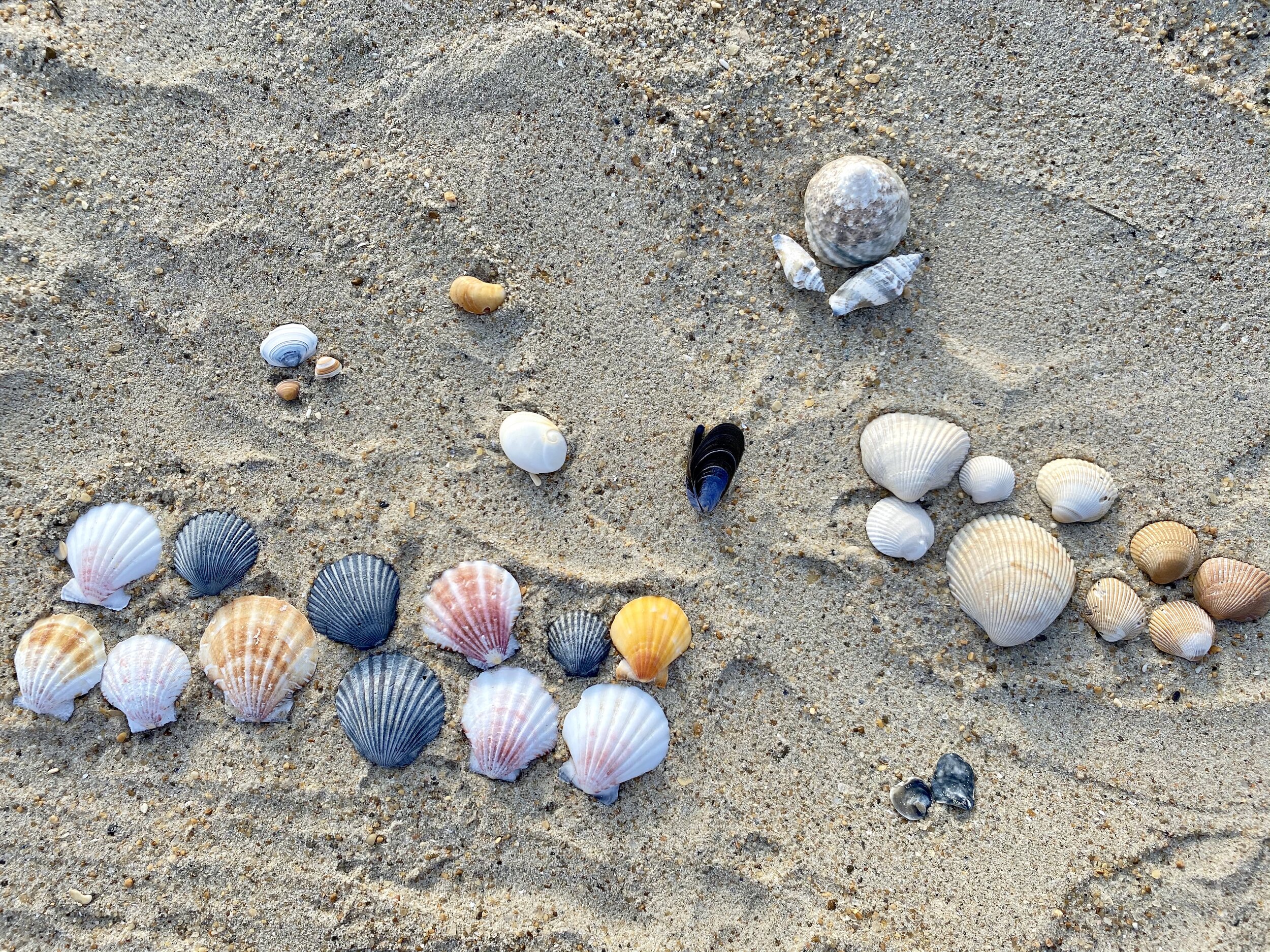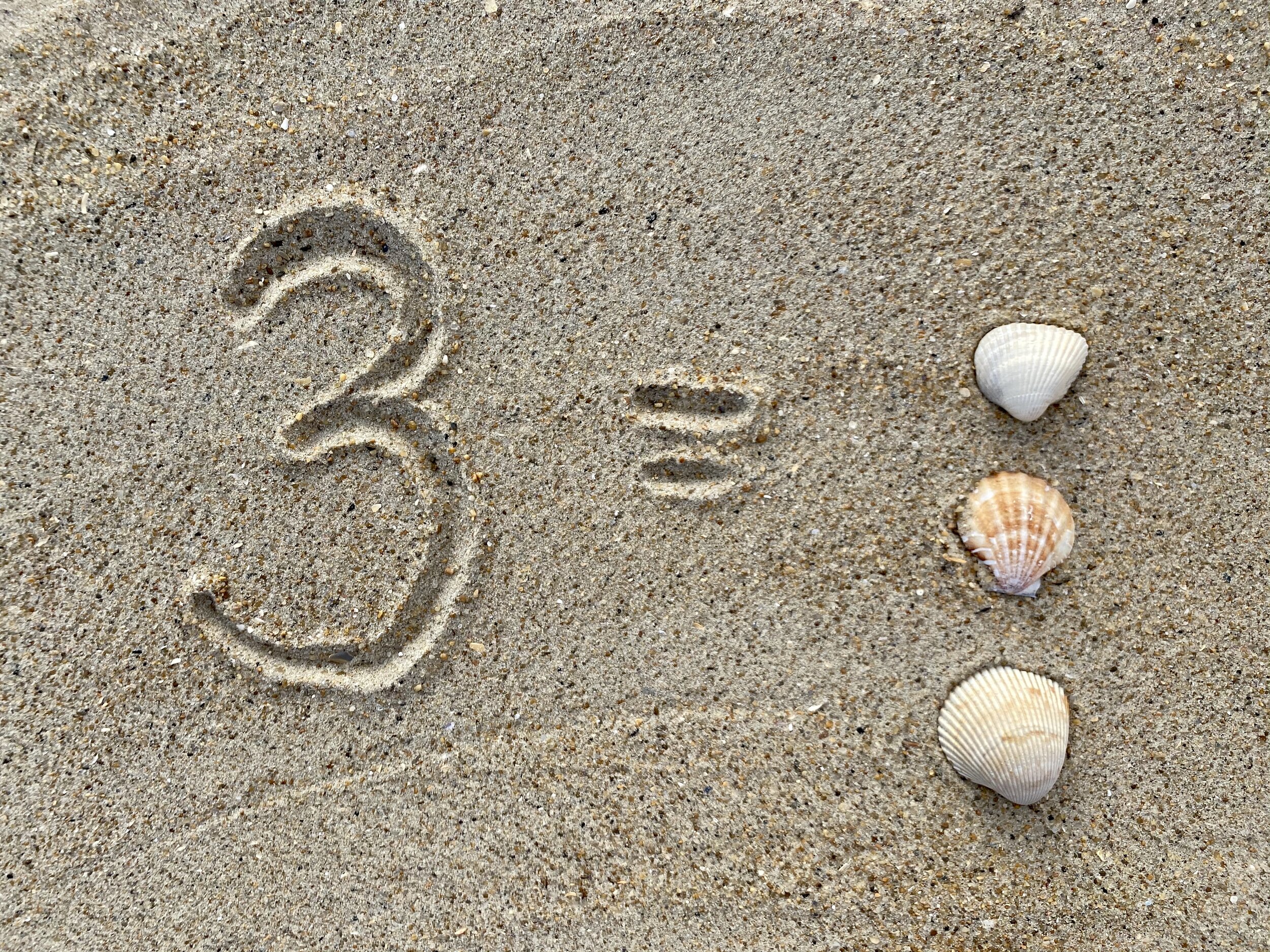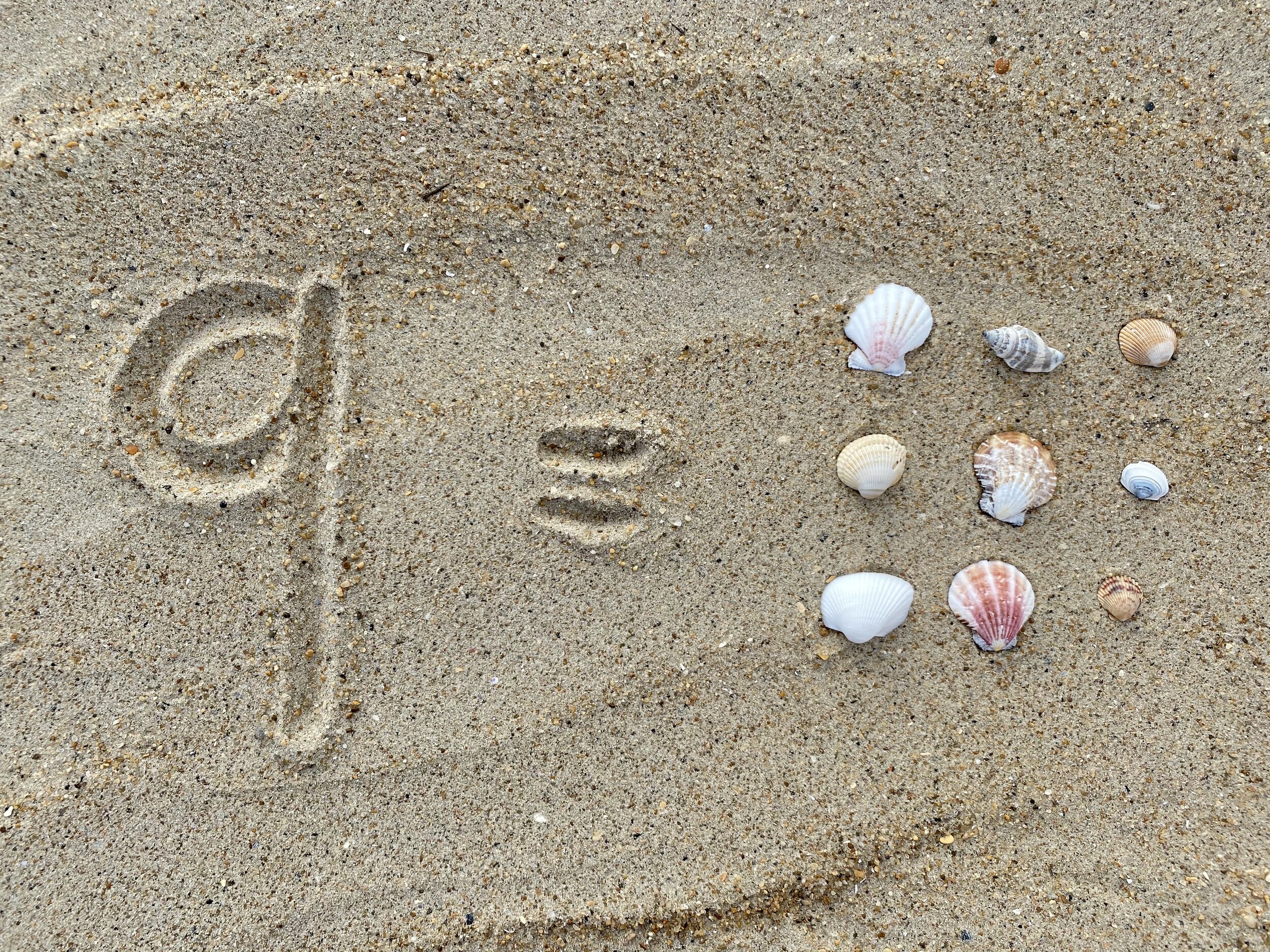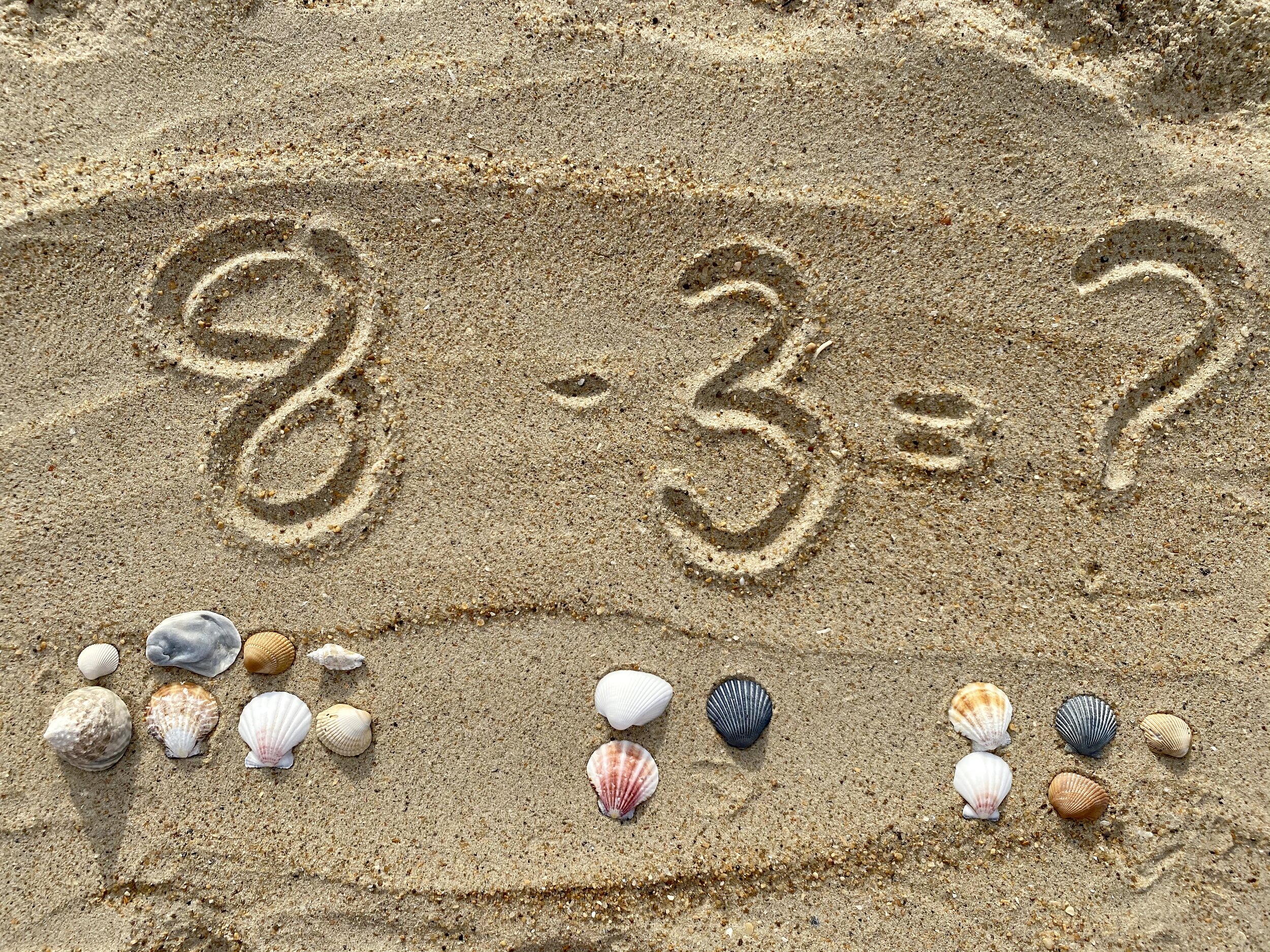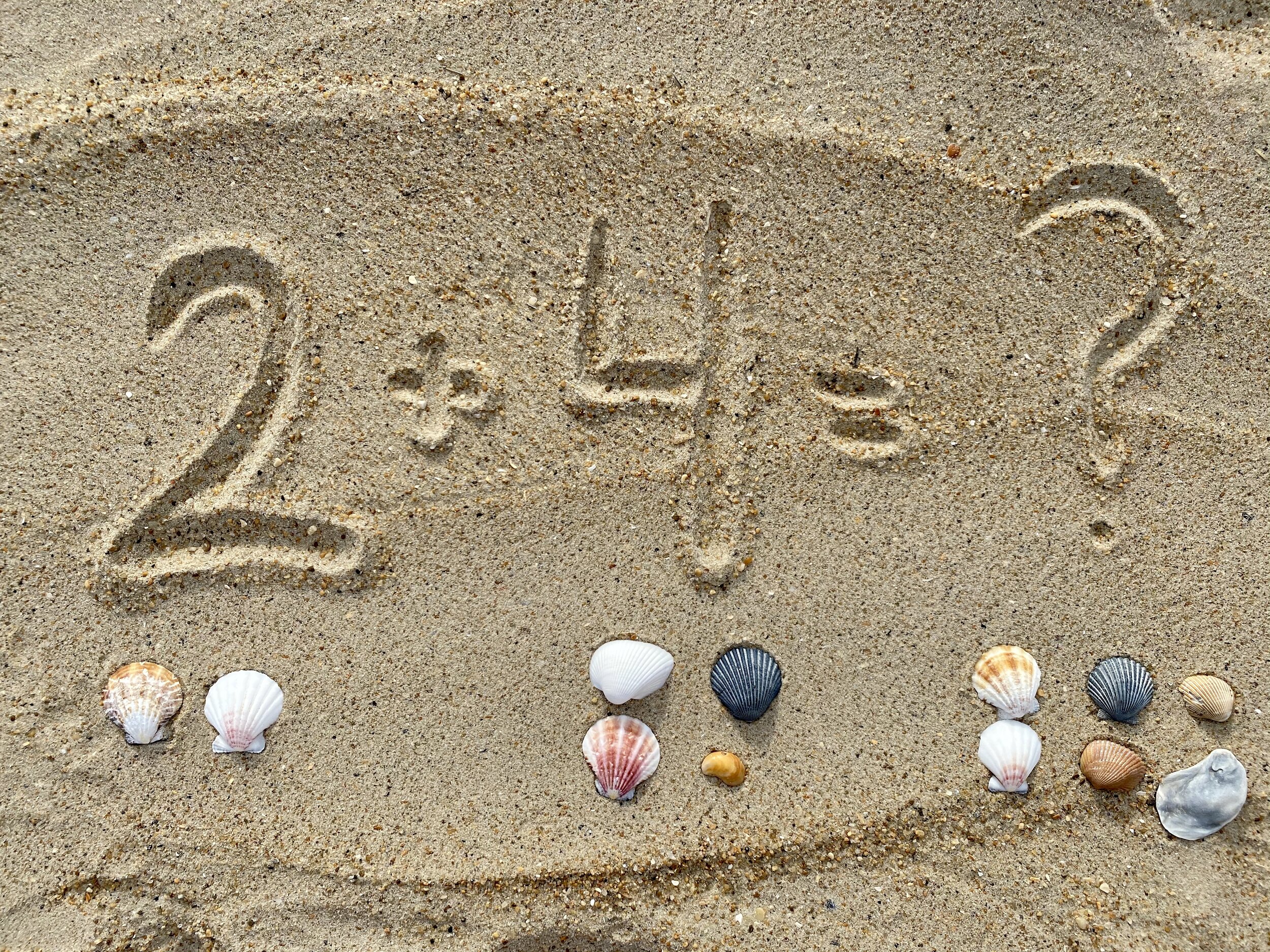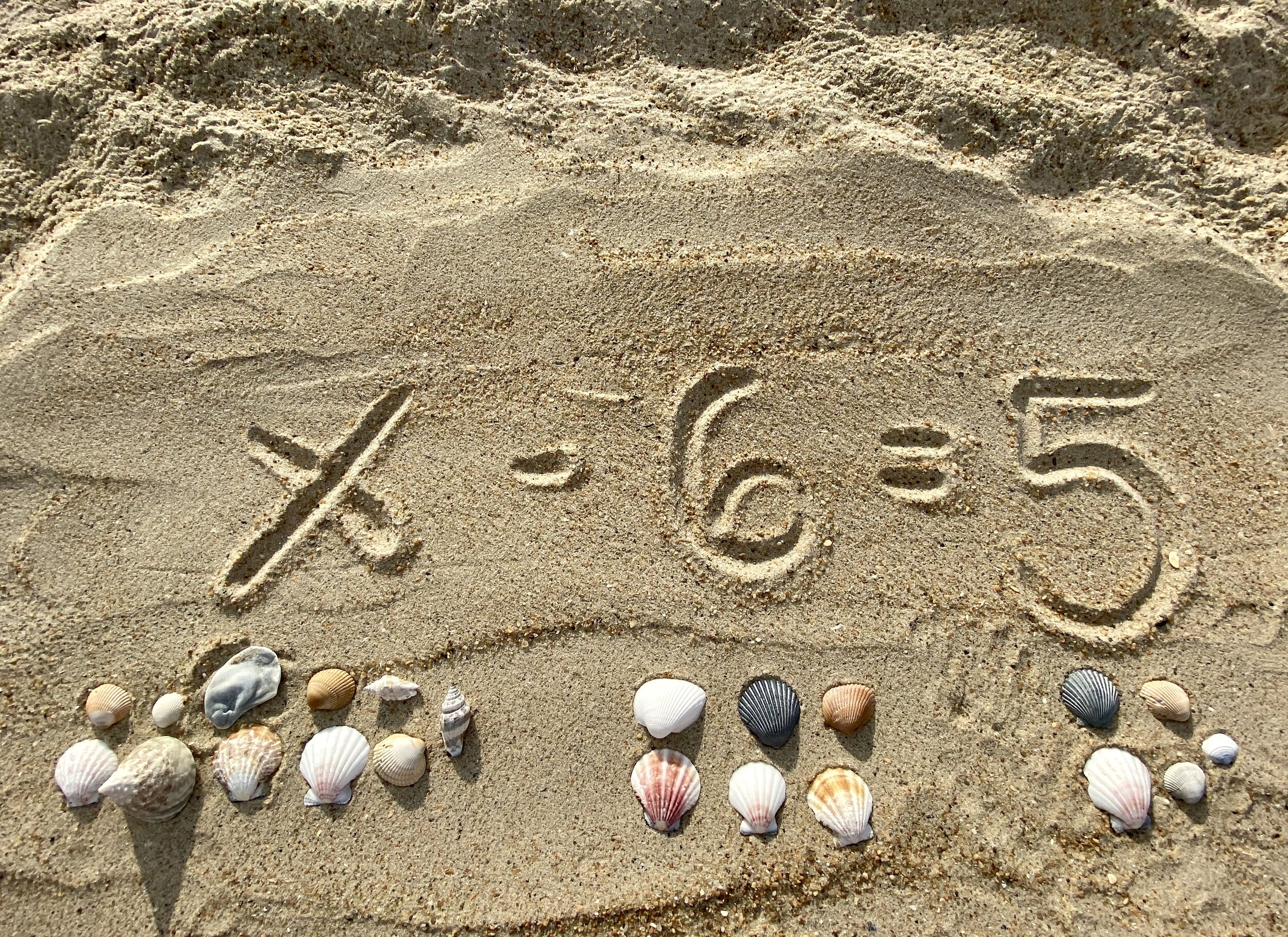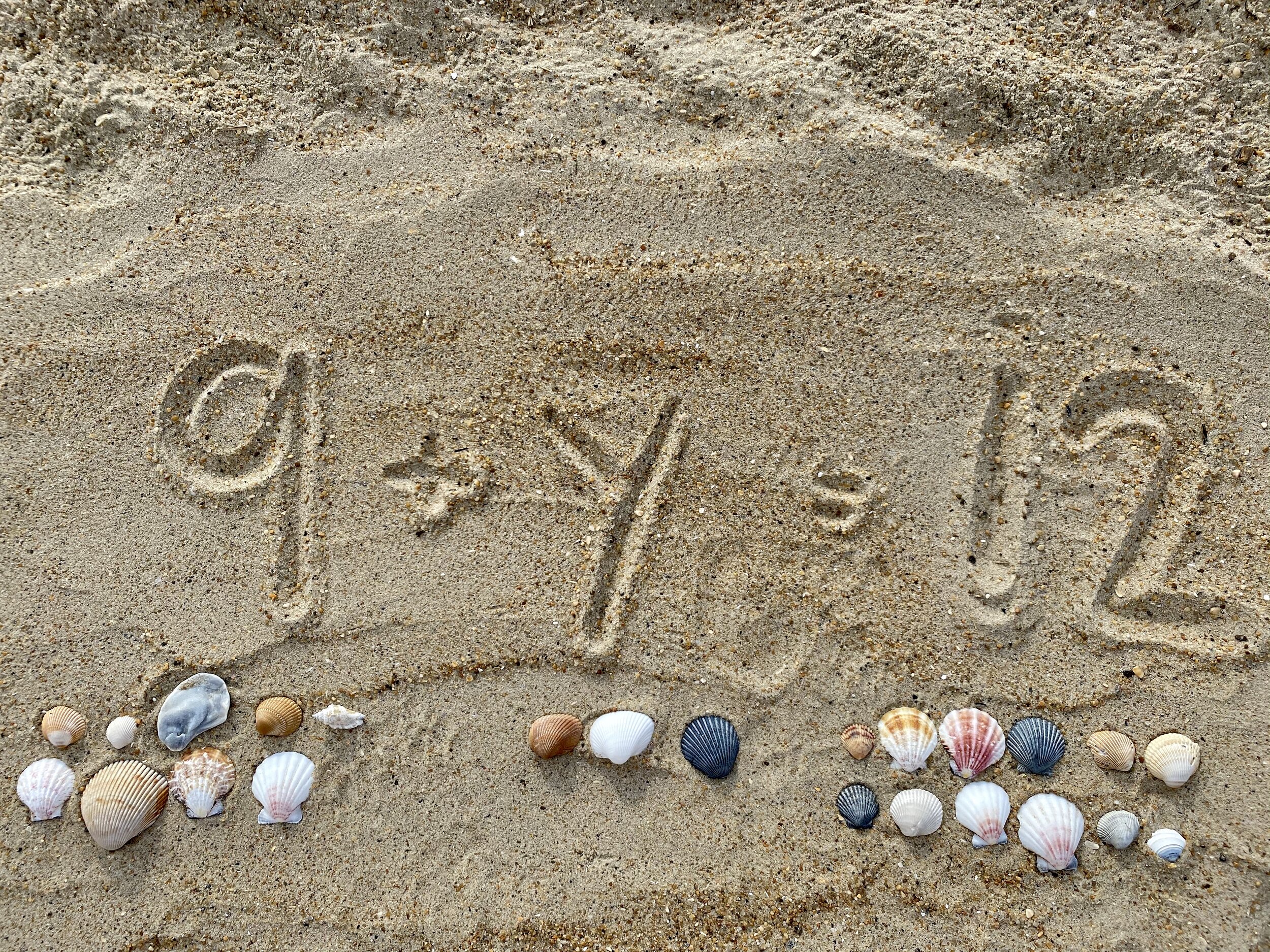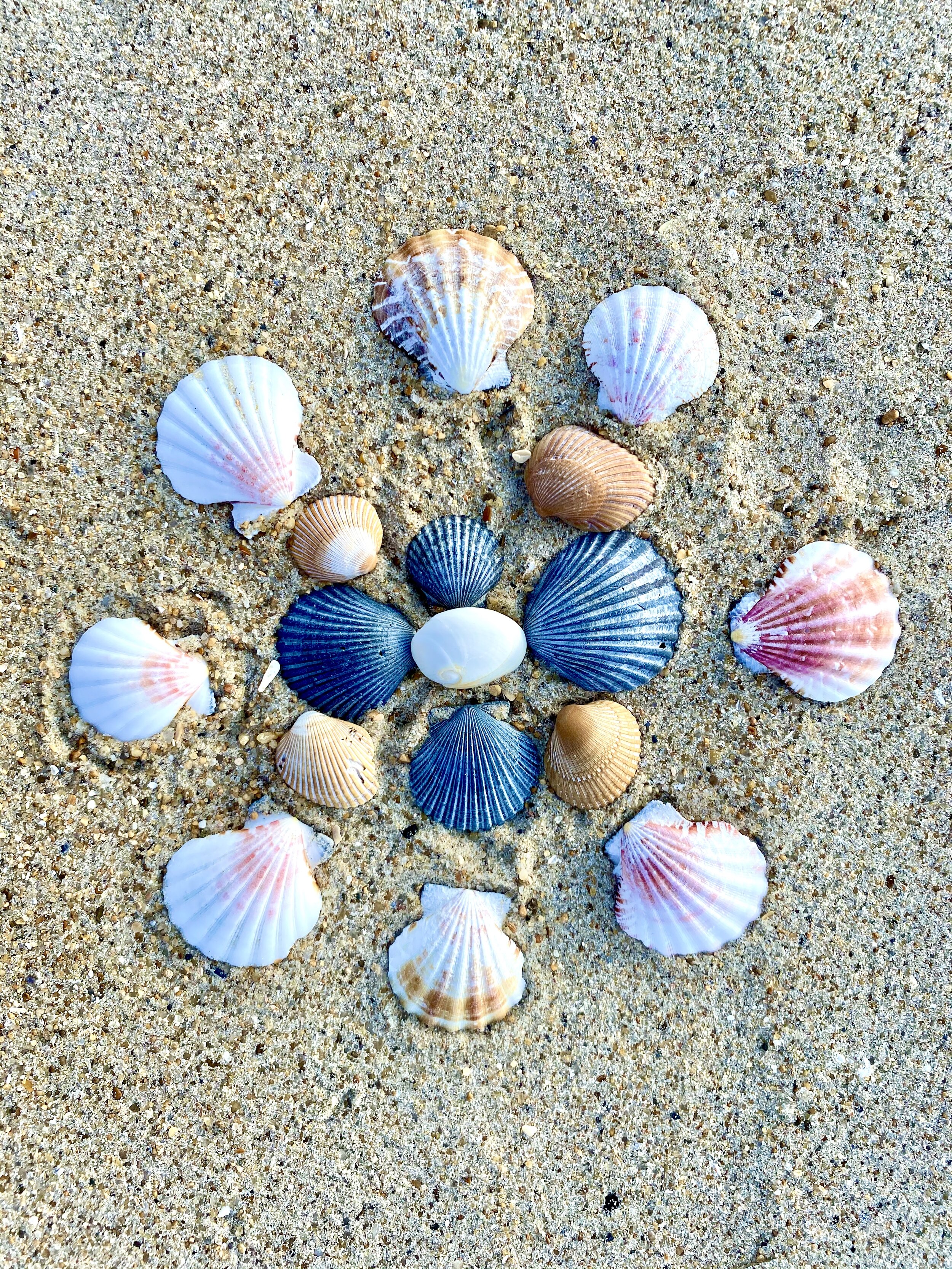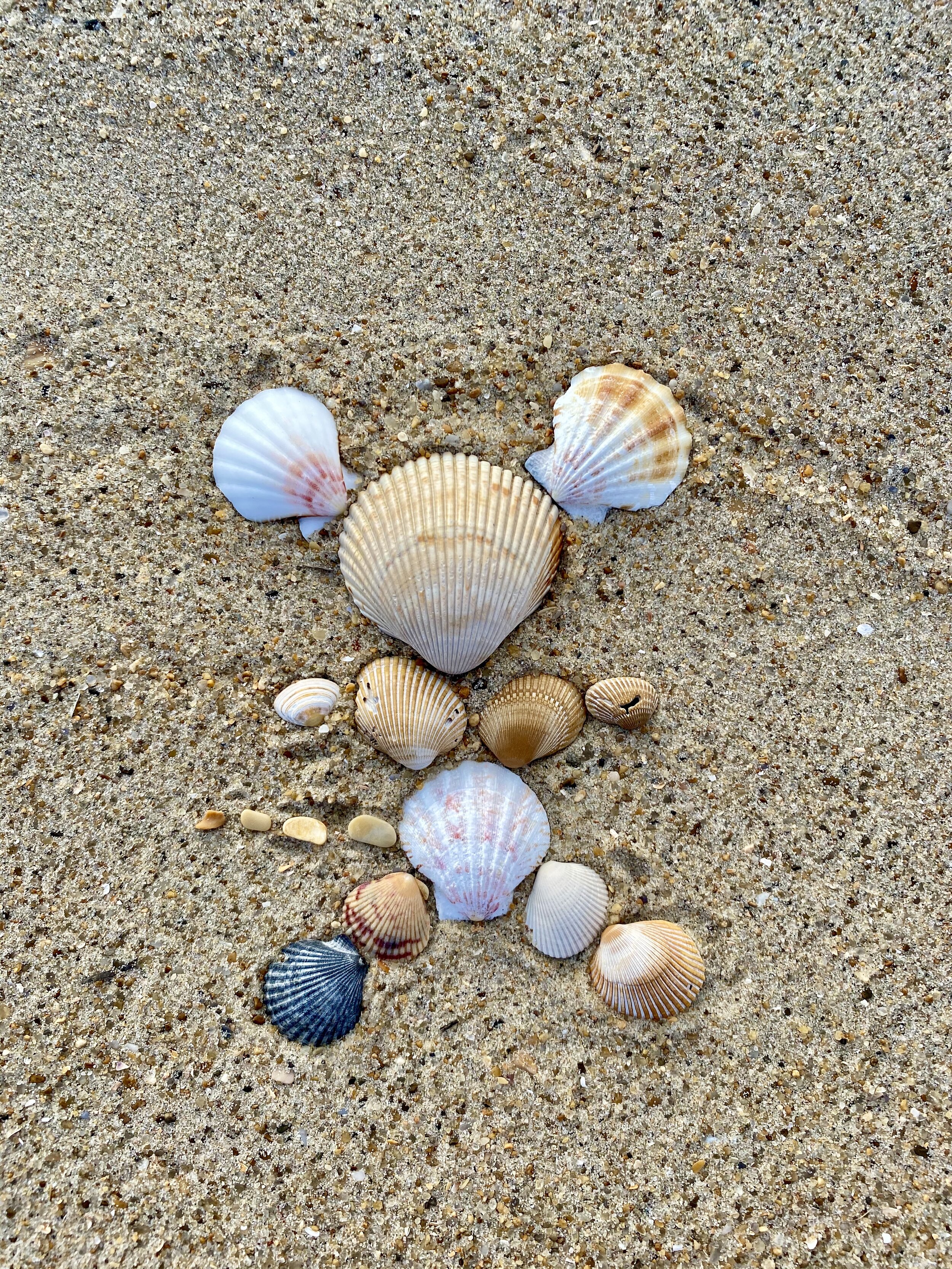Seashell Splendor
Seashells are a splendid and free learning tool to get children learning outdoors!
Setting up your Seashell Space
Bring a bucket to the beach and collect seashells of all shapes, sizes, colors, and textures! Feel free to rinse the shells in water to wash away any sticky sand. Then place every seashell face up on the sand so you can clearly see them all. We recommend creating a blank flat space using a flip-flop/hand/tool to help smooth the sand.
*No ocean or lake near by with seashells? No problem! Use an old collection of seashells or buy some and use them in a sand box, old volleyball court, or sensory table.
Seashell Cognitive Development
Sorting Seashells
Children enjoy the challenge of coming up with different ways to sort items. First, ask your child to sort the shells without giving any guidance. It will be great insight into how your child thinks and categorizes the world around them. (Some children will surprise you with their creativity!) Then have children sort the seashells according to parameters like color, shape, and size. Sorting helps children develop cognitive skills and build a foundation for problem solving in the future.
Seashell Seriation
Seriation is the method of arranging objects in size order- smallest to largest, shortest to tallest, etc.
It is an important skill that young children develop in early childhood. It is higher level thinking, where the child analyzes and then solves a problem. It is an important early math skill that enables children to be able to recognize the order of numbers. Shells come in a variety of shapes and sizes and are a wonderful medium to use to work on the development of this skill.
Play Cognitive Games
The cognitive games below can be played between an adult and child(ren) or between two or more children.
Play a memory game where children try to remember which shell is missing
Create two almost identical shell displays and have the children ‘find the differences’
Create a shell pattern and have the children continue it or make a pattern for you to continue or recreate
Seashell Math
One-to-One Correspondence:
One-to-one correspondence is a foundational math skill that helps children gain number sense by counting each object in a set by touching each object individually. Using this approach with seashells and sand:
Write a number in the sand and have the child place the correct number of seashells next to it
Place seashells in the sand and have them draw the correct number next to it
Ask the child to count all of the ____ color shells and place them in the sand together and write the corresponding number
Model the technique of using shells in the sand in a fun and exciting way and see how your child uses this idea in their play
Math Word Problems
In the sand write out simple math word problems and let your child use shells as the manipulative to help them solve the problem.
For example:
How many seashells did you collect today?
You collected 15 shells and your sister collected 8, how many do you have total?
I collected 9 shells and you collected 11 shells. How many more shells did you collect?
You collected 14 shells, but you dropped 5. How many shells do you have now?
Algebra & Mathematical Equations
Math problem solving can be fun using seashells as manipulatives:
Create equations by writing a number sentence in the sand with a question mark or letter representing the missing term and have the children solve it using seashells
Have the children create their own equations for others to solve
Challenge your child with progressively more difficult equations
Seashell Science
Investigate a Conch Shell
Experiment and research why does it sound like there is an ocean inside your conch shell?
Is it magic or acoustics? Let your child decide!
Understanding Seashells
Try to identify what kind of seashell you collected and if a creature may have once lived in it. Check out our beach books to help you!
Seashell Art
Using seashells create art following a pattern based on shell size, color, or shape. Or use the shells to create art to look like something else, like an animal, truck, football, house, etc. Play around with shell imprints by placing the textured side of the shell face down into the sand. Create art using the imprints from the shell in the sand or use shells as your imprint tool for painting!
Seashell Literacy
Use seashells to make letters and words.
For early literacy learners, write a letter in the sand and let the child add shells to it. Then allow children to draw letters in the sand and add shells to the letter.
*Challenge - can you make a full sentence using only seashells?
Disclaimer: As an Amazon Associate we earn from qualifying purchases. For more information please read our Earnings Disclaimer.
